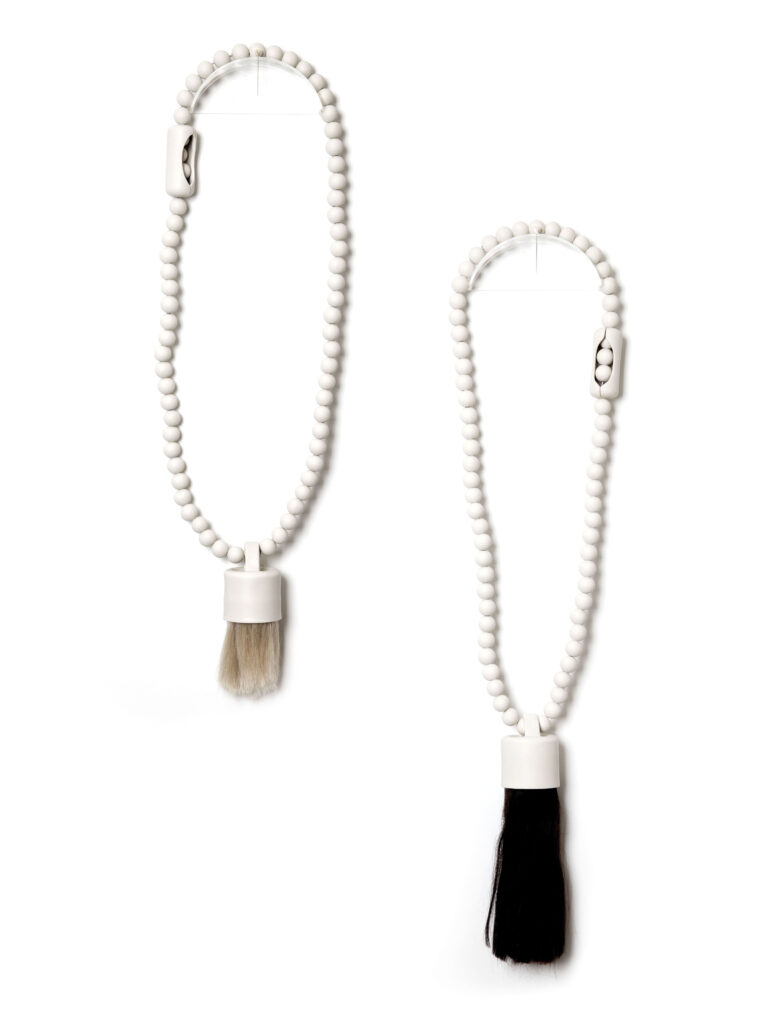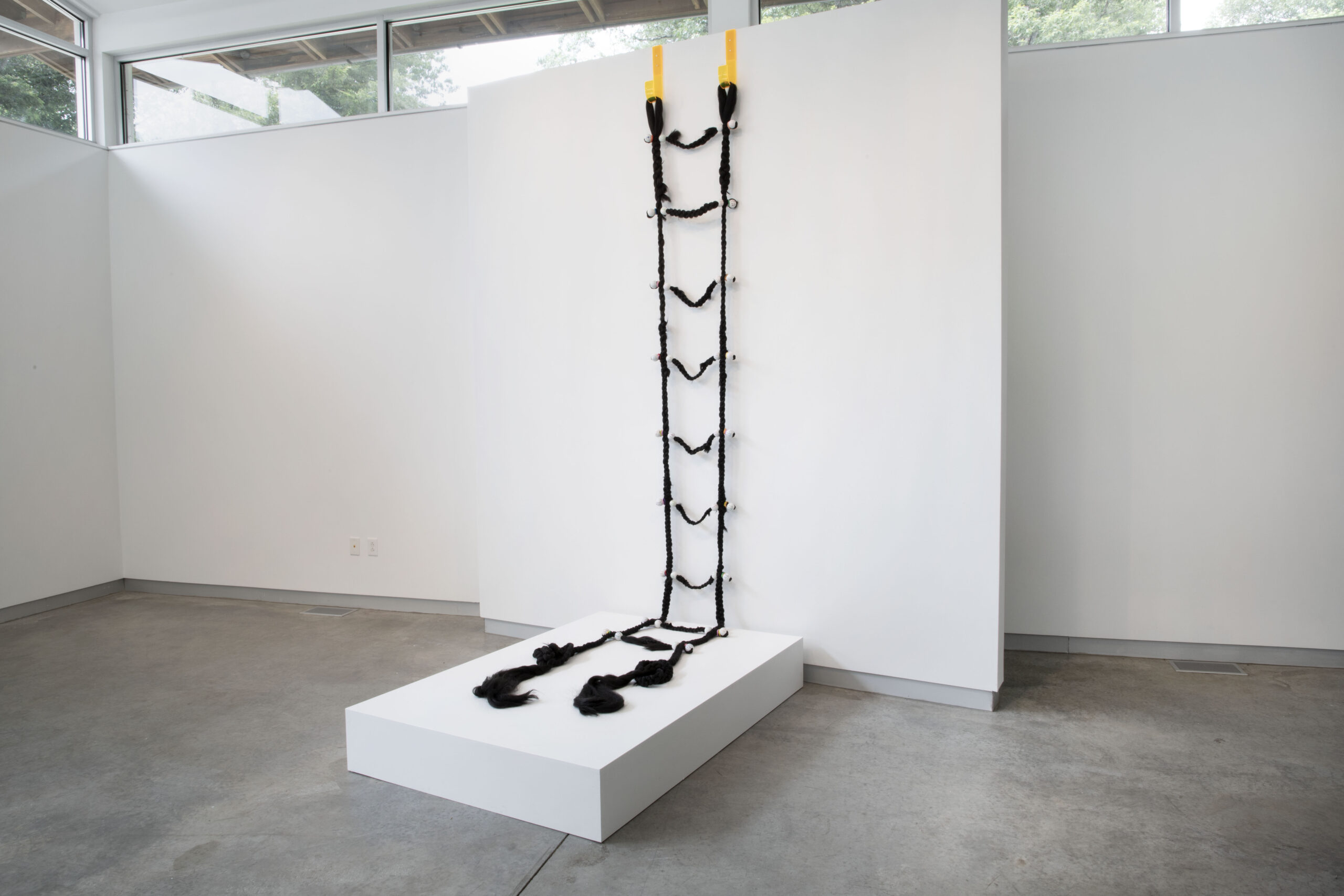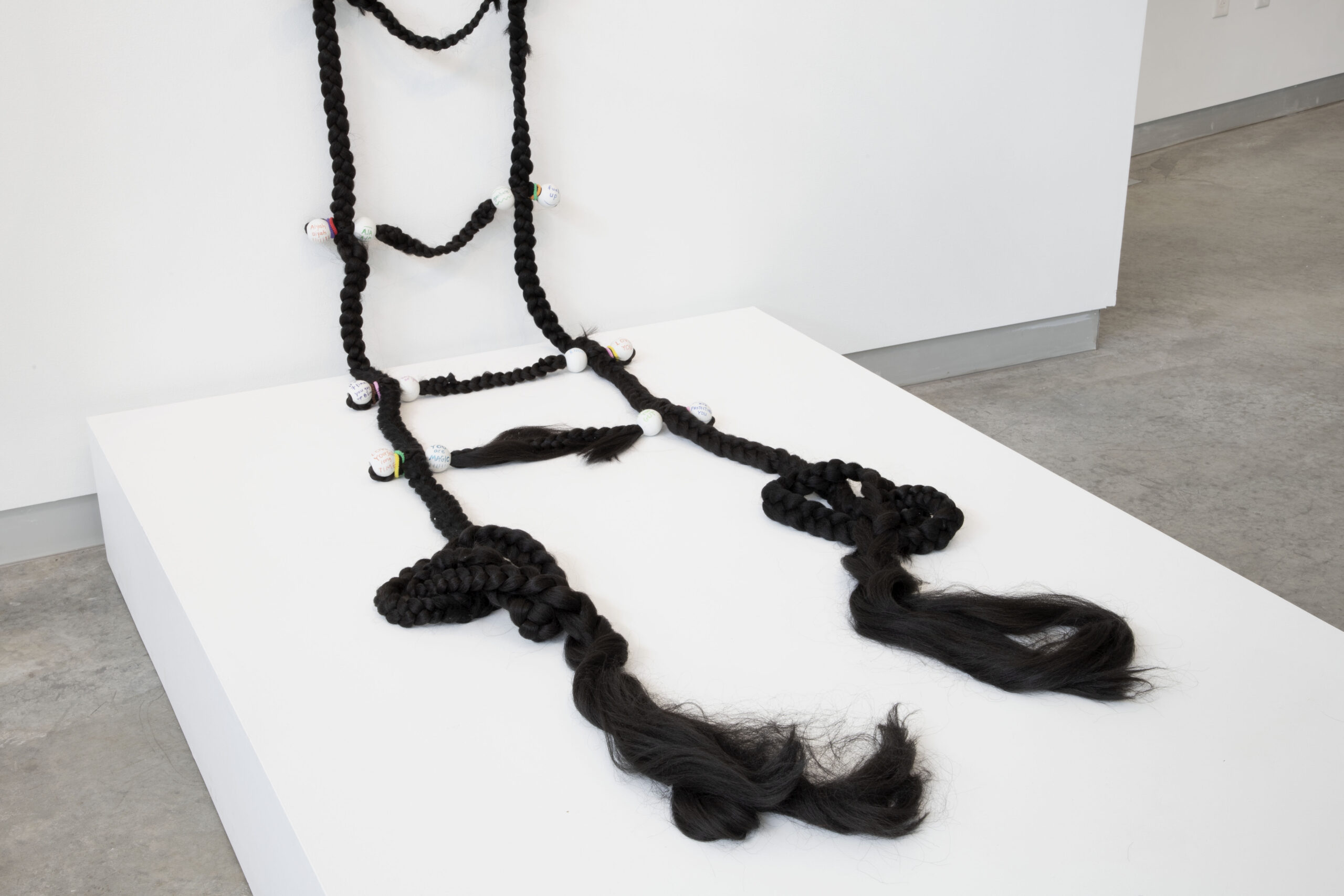JENNIFER LING DATCHUK
Assistant professor of ceramics at Texas State University; awards: 2020 United States Artists Fellowship, 2017 Emerging Voices Award from American Craft Council; residencies: Kohler Arts/Industry Residency (WI), The Pottery Workshop, Jingdezhen (China), Künstlerhaus Bethanien (Germany), Artpace (TX); collections: Museum of Fine Arts Houston (TX)
Black and White
Porcelain and collected human hair
36H x 10W x 4D / 32H x 10W x 4D inches
2021
Datchuk looks at how adornment can be used to empower and comfort the wearer in these forms, which are inspired by jewelry and good-luck charms. By rendering these objects on a large scale, she conveys the weight of traditional cultural symbols. In Black and White, Datchuk harnesses the symbolism of human hair to challenge the dualities associated with luck. She pairs the black hair of a young girl with the grey hair of an elder, referencing the black-and-white symbol of the Chinese principles of the universe—yin (female) and yang (male), good and bad, and the naiveté of youth vs. wisdom that comes with age.



We Climb
Hair, synthetic hair, porcelain beads from Jingdezhen (China), hair ponies, acrylic
160H x 18W x 4D inches
2021
We Climb reclaims the imagery of ladders as incorporated in racist American propaganda from the late 19th Century, like this cartoon by Thomas Nast for the American political magazine, Harper’s Weekly. The Chinese Exclusion Act (Immigration Act of 1882) was a piece of federal legislation that suspended the immigration of Chinese laborers to the United States and set a precedent for U.S. anti-immigration legislation.
As anti-immigration sentiments and hostility persist in America, Datchuk’s hair ladder symbolizes strength and support within the Asian American Pacific Islander (AAPI) community. Hair, as a material, has a long history of representing loved ones as well as conveying a lineage or legacy. When individual strands are woven together, they become strong. Resembling an escape ladder, Datchuk’s design references the German fairytale, Rapunzel. However, instead of using a blonde braided ladder, Datchuk revises the narrative by using dark brown and synthetic hair, adorned with porcelain beads that carry words of affirmation from AAPI individuals.
Tame
Video (Duration: 3 minutes, 30 seconds)
2021
Tame is Datchuk’s reflection on contemporary constraints that limit the successes of women of color. Using the decorative-art languages of hair and porcelain, Datchuk translates the tension between her genuine reactions to current events and her difficulty navigating conversations about political, cultural, and social biases. In one scene, her head is pulled back by braids that resemble a horse bridle, a device used to domesticate wild horses, as a metaphor for imposing world forces.
In another scene, Datchuk conveys psychological and emotional weight by carrying a basket of fetishized, porcelain “China girl” figurines, a common motif in her work. From functional wares to furniture, the decorative-arts market has a long history of being controlled, regulated, and consumed by a predominantly white Western world. This mirrors influential forces that affect today’s culture, including the perpetuation of negative stereotypes of race and gender.
To inquire about the artists or work in the exhibition please email gallery@penland.org or call 828.765.6211



